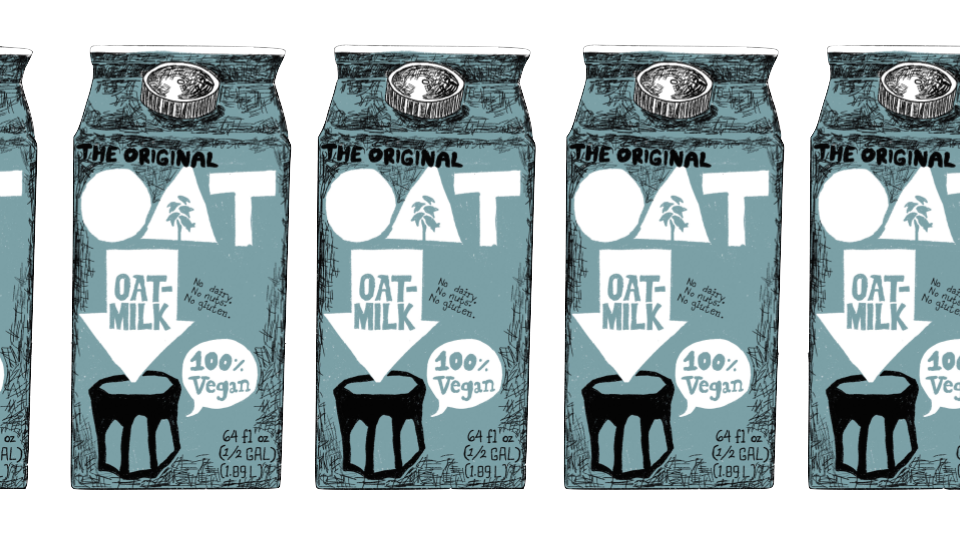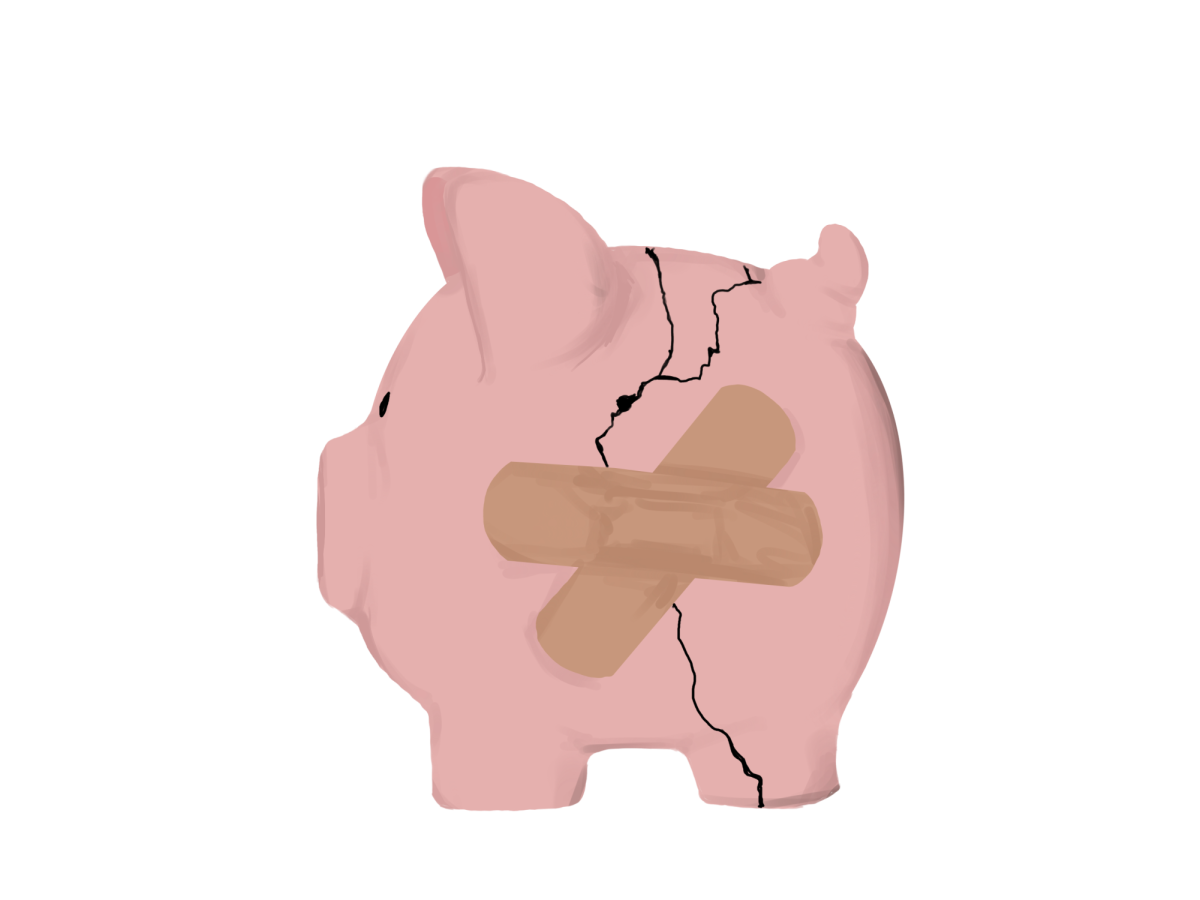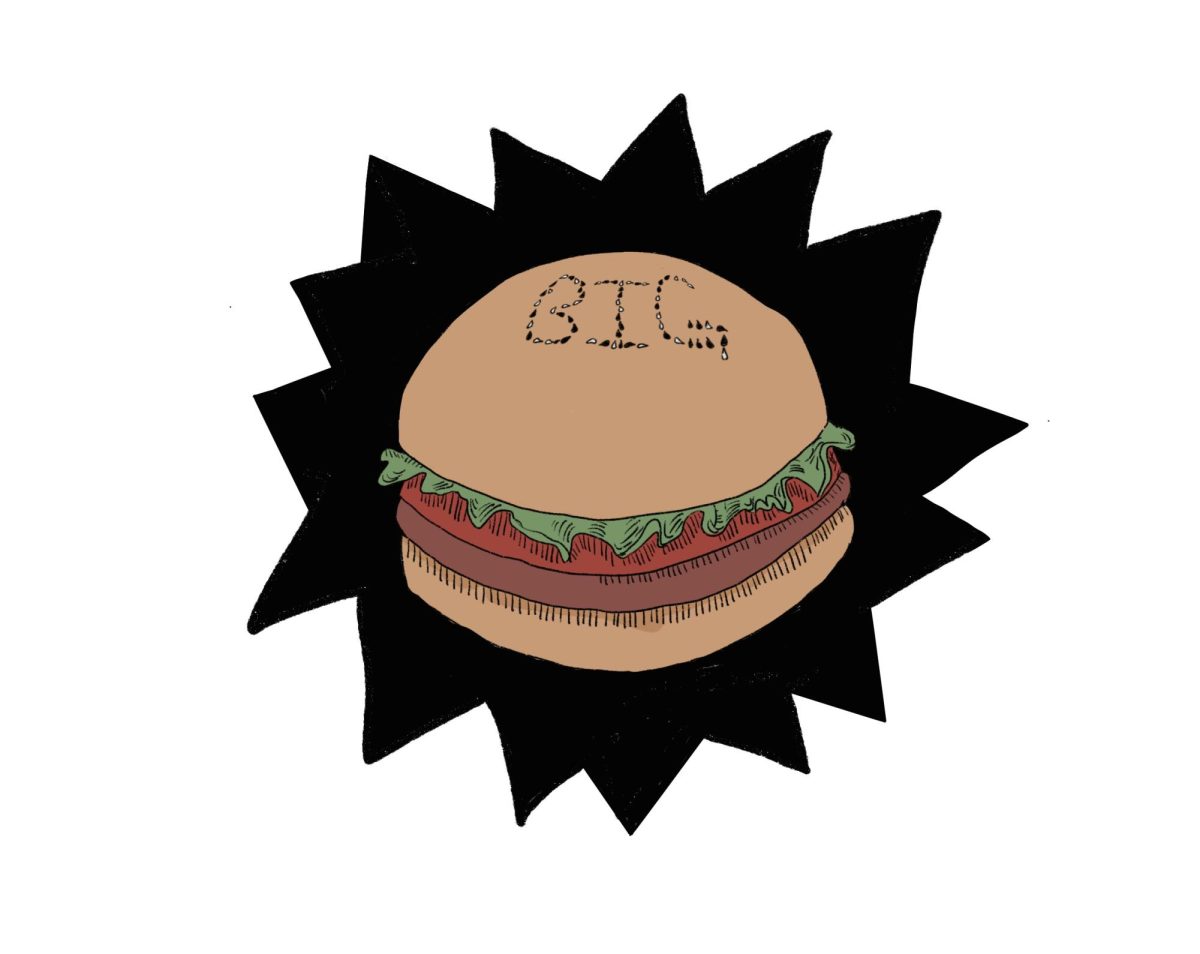HISTORY
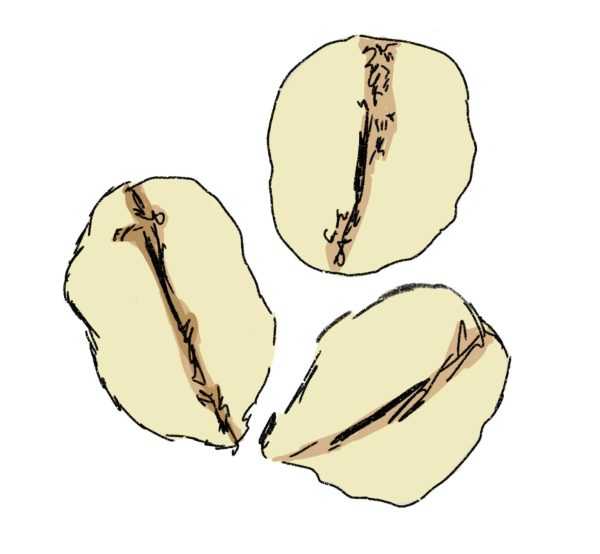
Milk, an essential ingredient for a vast majority of dishes and a liquid praised for its nutritional value, is a staple in any American’s fridge. Throughout American history, milk has continued to be essential for one’s diet. For example, the “Got milk?” campaign, a government-supported advertisement that began in 1993, is a perfect example of American dependence on milk, as it completely shifted Americans’ perception in favor of drinking milk.
However, cow’s milk has recently been painted in a negative light. This was kick-started by research against the “Got milk?” campaign. Alissa Hamilton, a food and society policy fellow at the Institute for Agriculture and Trade Policy, wrote “Got Milked?: What You Don’t Know About Dairy and the Truth About Calcium,” a 2015 book dedicated to criticizing the cow’s milk industry and debunking the “Got milk?” campaign. The book is a science-based critique of the movement, which argues that milk is not the only source of calcium.
“Milk is processed, homogenized, pasteurized and fortified and comes from dairy cows fed antibiotics and, in the U.S., growth hormones — ideas that are difficult to reconcile, perhaps, with milk’s historically wholesome image,” Hamilton wrote in “Got Milked?”
Meanwhile, plant-based milk alternatives have grown in popularity over time, a prime example being the increased consumption of oat milk.
“Although milk is only one small part of a person’s diet, plant-based milk along with a plant-forward diet offers many benefits for your health and the environment,” UCLA Health Senior Dietician Dr. Dana Hunnes said.
Oat milk is a very popular milk substitution, and it can be ordered in almost every coffee shop nationwide. It is known for its sweet and slightly oaty taste, adding the perfect complimentary flavor to coffee and other caffeinated beverages. But why is the milk alternative so popular, and how is it different from other plant-based milk alternatives? Who even invented this ever-so-popular beverage?
Oat milk can be traced back to 1990, when it was originally invented by Rickard Öste at Lund University in Lund, Sweden. At the time, Öste was researching lactose-free milk alternatives when he and his research team came across the unique oat drink by mixing oats, water and an enzyme mixture. Öste proceeded to found Oatly, the first oat milk company and a leading oat-based product manufacturer today.
Milk alternatives did not begin with oat milk, however. Almond milk, another popular alternative, began in the Middle East in the 13th century when it was initially used as a replacement for cow’s milk during fasting periods. Soy milk, rice milk and coconut milk all similarly have longer histories than oat milk.
It was not until research delved into lactose intolerance in the 1960s that many researchers, such as Öste, began to study and commodify milk alternatives for a larger market. While sensitivity to cow’s milk still remained present prior to this research, this strange sensitivity or intolerance was not largely acknowledged and cow’s milk continued to dominate the milk market.
Since its commodification, oat milk has become an appealing option to consumers for reasons other than its lack of lactose. According to Sponsored Programs Information Network (SPINS), oat milk is the second most popular cow’s milk substitution, behind almond milk but ahead of soy milk. For individuals who are vegan or lactose intolerant, oat milk provides a popular and sweet alternative.
Many oat milk brands have emphasized its environmental and health benefits to market oat milk as a morally superior choice to cow’s milk.
Oat milk is thriving within coffee shop culture as a result of its unique marketing. According to café market analyst Sean Edward, oat milk is projected to capture half of all coffee shop sales in Australia, where it currently owns 30% of the market. Many café-goers are prone to ordering oat milk due to the environmental and moral implications of the milk substitute. Coffee shops everywhere are embracing the popularity of the oat alternative and are taking steps to encourage the milk substitute over cow’s milk. For example, Blue Bottle Coffee, an international coffee shop chain with over 100 locations, has pivoted to make oat milk their default milk to reach carbon neutrality. Additionally, Starbucks, the largest coffee chain in the world, stopped charging extra for oat milk on Nov. 7, further demonstrating the infiltration of plant-based milk into coffee shop culture.
Social media and popular culture play a large role in popularizing oat milk as well. The hashtag #oatmilk has over 600,000 posts on Instagram and over 90,000 posts on TikTok. This social media presence helps to introduce people to the benefits of oat milk and creates societal influence to move away from cow’s milk.
Nonetheless, the growing trend in oat milk purchasing and consumption is a global phenomenon. According to SPINS, oat milk retail sales in the U.S. rose over 50% to $527.44 million dollars in 2022. Moreover, oat milk retail sales in the UK grew by over 100% from 2019 to 2020, according to the World Coffee Portal. Jacek Walterowicz, the co-founder of (Un)Ordinary, an American oat milk brand, spoke of his prediction of oat milk’s continued growth in the future.
“The next few years will be challenging for the overall plant milk beverage category, but oat milk will continue to lead the market,” Walterowicz said. “Consumers have many options now, from independent brands that make fresh, bottled plant milks to more established companies, which lead the market and help to create trends.”

THE PROS AND CONS
With environmental concerns on the rise as the climate crisis intensifies, many have been searching for sustainable alternatives to their typical food and drink options.
Possible animal rights concerns, as well as food allergies and potential health benefits, have made oat milk seem like a perfect alternative to traditional cow’s milk. According to a New York Times article, plant-based diets have risen in popularity over the past five years. At the end of 2020, sales of plant-based milks totaled $2.5 billion, accounting for 15% of all retail milk sales. By 2026, plant-based milk alternatives are projected to make up 30% of total milk sales.
From an environmental standpoint, dairy production is often condemned for the amount of water it requires and the amount of greenhouse gasses it emits. Oat milk production is more sustainable than cow’s milk production, as well as the production of most alternative nut-based milks. Oats use the least amount of water compared to other plants. According to a study done for the industrial wastewater treatment company IX Power Clean Water, it requires up to 101 gallons of water to produce one cup of almonds. Rice milk is largely considered the most water-consuming of all plant-based milk alternatives, as it requires about 269.8 liters of water for the production of every liter of rice milk. A liter of oat milk, on the other hand, requires only 48 liters of water to produce. Moreover, oat milk production requires 60% less energy and 80% less land than cow’s milk production. It also emits 80% fewer carbon emissions than cow’s milk.
Oat milk is not only beneficial for the environment. It is also a useful alternative for those who have dietary restrictions. Oat milk is free of the top nine allergens, making it a safe option for those with allergy-related food restrictions
From an animal welfare perspective, oat milk is also an option for many of those who see the dairy industry as cruel. Additionally, it has been proven to be a healthy milk alternative. According to the National Institutes of Health (NIH), oat milk contains various vitamins and micronutrients and can lower cholesterol. NIH research has also shown that five weeks of oat milk consumption can lower serum and LDL (low-density lipoprotein) cholesterol, or “bad” cholesterol.
When compared to other plant-based milks, such as almond milk, oat milk typically has more protein and fiber. In an interview with the Cleveland Clinic, functional medicine dietitian Jorden Edinger stated that oat milk products generally have two or three grams of fiber per serving, which is more than most almond milks. Oat milk is also higher in calories than most other plant-based milks, but the jump isn’t much when compared to cow’s milk. A serving of oat milk contains about 120 calories, in comparison to the 103 calories in a serving of cow’s milk.
However, oat milk isn’t equal to cow’s milk in every way. According to The New York Times, the popular oat milk brand Oatly has seven grams of added sugar, compared to the zero in cow’s milk. Oatly milk also contains only three grams of protein, while regular cow’s milk has eight. Oat milk has also been linked with cardiovascular disease, and many brands often include added gums or oils that aren’t present in cow’s milk, which can cause inflammation.
Another concern about oat milk is its affordability. The cheapest carton of oat milk is more expensive than the cheapest carton of cow’s milk. On average, oat milk costs twice as much as cow’s milk. According to The Guardian, nearly every part of the oat milk manufacturing process is more expensive than its dairy counterpart. This is true across the board for all nut-based milks, thus making milk alternatives largely inconvenient and inaccessible for lower-income individuals, deterring many from buying it.
Despite these concerns, oat milk remains a popular alternative to cow’s milk. Its delightful taste and texture, which has been found to feel similar to cow’s milk with a more complementary flavor for coffee, has made it a popular alternative for baristas. Compounded with fears about the climate crisis, a recent boom in veganism in the U.S. and increasing concerns of lactose intolerance, oat milk has become one of the most common nut-based milks.
OATS AT MARLBOROUGH
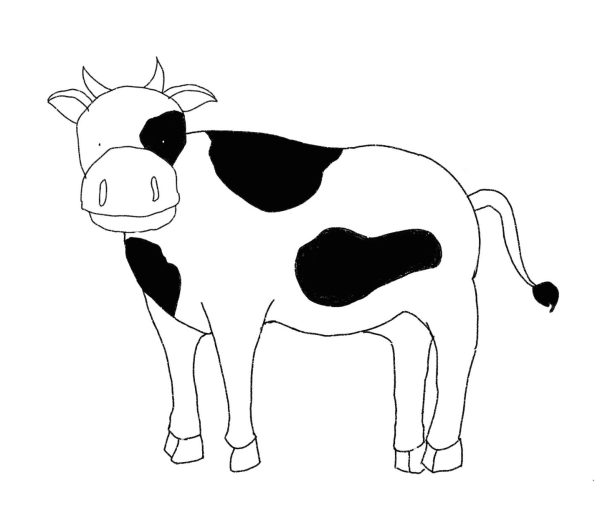
At Marlborough, it’s rare to go a day without seeing students clenching oat milk-infused beverages. A favored option from Café M, many students drink the milk on campus as a cow’s milk alternative. Oat milk is typically the milk used in Marlborough’s lunch boba offerings, a beverage that is very popular among the student body. The use of oat milk in Café M beverages is a policy employed by Sage Dining Services, the company that provides food at Café M, to avoid allergens and health concerns for students with lactose intolerance.
“As a lactose intolerant [person], oat milk is genuinely the only thing that keeps my stomach intact,” Rainey Renwick ’26 said. “I make my own chocolate milk every day in the Caf, and if they didn’t have oat milk, I wouldn’t make it out of the single-stall restroom.”
Oat milk is sold at Café M along with cow’s milk and almond milk. Many students, including Renwick, consume the beverage at Marlborough. As she said, the beverage is popular for students as a lactose alternative at home or as a part of a regular coffee order.
In a survey sent out to the Marlborough student body, 28% of 127 students responded that their preferred choice of milk is oat milk. Of that 28%, 40% said that they drink it due to health reasons, 39% said that they drink it due to its appealing taste and 21% said that they drink it due to environmental reasons.
“I love the taste of oat milk, specifically Califia, because it has richer flavors and gives me a mental boost whenever I have it,” an anonymous student said.
Although oat milk is popular on campus, the majority of milk drinkers still prefer a traditional dairy option. Fifty percent of students expressed a preference for cow’s milk in the survey.
The incentive to drink oat milk mainly stems from a place of climate concern. Environmentalism is a foremost concern for many, which has led to a push to drink alternative milk.
“I know the dairy industry contributes to a lot of greenhouse gas, so I mostly drink oat milk for the environment,” Mia Lollie ’29 said.
Oat milk has been especially popular among Gen Z, well-known for being the most environmentally conscious generation, according to a study by the Pew Research Center. This fact has been linked to the increase in alternative milk consumption by this generation, as oat milk has been proven to be a sustainable choice. Moreover, Gen Z has circulated oat milk through social media, leading to more popularity with the drink.
Social pressure to drink oat milk presents itself in different ways. At Marlborough, the pressure to drink oat milk has primarily come from social media and health concerns.
“I … think the way oat milk is presented on social media as a healthy alternative to real milk and that it has all these health benefits entices me even more to drink oat milk,” the same anonymous Marlborough student wrote in the survey. “For example, I might be on TikTok and see a video that says, ‘Real milk gives you acne,’ and then I see a video saying ‘Oat milk gets rid of the toxins in your body by reducing blood sugar, lowering cholesterol, et cetera.’ These videos contribute to why I drink oat milk and not cow milk.”
